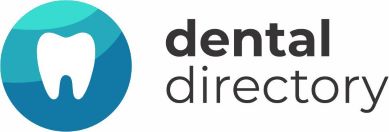Prioritising cash flow for a rainy day
24/08/2022
by Credabl

Prioritising cash flow for a rainy day
If the pandemic taught us anything, it’s that having a rainy day fund is more than a great idea – it’s essential in business today. You just never know if or when a major event could impact your revenue and savings in a pretty significant way.
Cash flow was indeed the common concern for small businesses and practice owners since the start of the pandemic in 2020, as unplanned closures and multiple lockdowns experienced by medical, dental and veterinary practices either depleted or stopped incoming revenue – evidence of just how crucial access to funds can be.
Here, we drive home the point of why your practice needs a rainy day fund and how to go about setting it up.
Lessons learnt from the pandemic
While there are a number of ways to reduce the harsh impact of temporary business closures such as government grants, options to pause repayments and in some cases, rent relief from landlords, businesses still require a certain amount of cash flow to cover operating expenses that they incur irrespective of whether or not the business is open.
This was even the case for some of the Australian government’s pandemic schemes in place to offer support. And it was a requirement of Job Keeper that business owners pay their employees upfront before accessing the payments from the government. Credabl was also quick to recognise that for many medical professionals there would be a gap and developed the JobKept Overdraft. But without the guarantee of future business support schemes in times of crisis, what else is available?
Setting up a cash flow forecast
Cash flow forecasting is essentially a plan of a company’s future cash position, based on estimates using the business’s financial metrics.
By tracking and analysing forthcoming income and expenses, business owners gain the benefits of understanding their company’s position, anticipate and proactively cover any shortcomings, and also plan for future growth.
In the case of a new business, a cash flow forecast is often set up by the practice’s accountant. In these forecasts, it is not uncommon to expect negative cash flow in the initial months of opening.
Something that may come in handy is setting up an overdraft facility.
What is an overdraft facility?
Traditionally, overdraft facilities provide readily available cash to pay day-to-day expenses. So logically, the same type of facility is one way to support gaps in your cash flow and keep your business running during quiet periods or while you are waiting to be paid for the work that you have done, without having to utilise your personal funds.
The overdraft provides flexibility for businesses to utilise funds at any point in time with interest only calculated on the amount that you use. It is a revolving line of credit that allows you to draw, repay back and redraw back up again as and when you require the funds. Often, overdraft facilities sit dormant in the background, providing a safety net for a rainy day.
An overdraft facility can come in handy to support the business’s negative cash flow while it builds itself up. An alternative would be to use your own personal cash, which may mean removing cash from your home offset account, or perhaps a high interest savings account. By establishing a cash flow option for your business, it also means you can keep your personal and professional finances separate. You might like to read more about whether an overdraft facility is the answer for your practice.
Note that convincing a bank to loan you cash can be a challenging negotiation. That’s where Credabl comes in. We’ve been working with medical professionals for decades. From choosing a secured or unsecured loan to the proper usage of unpaid facilities and consequences, our team of financial specialists can determine the best settings for your unique circumstances.
With COVID-19 still impacting businesses around the world today and with many still trying to get back on their feet, you could argue that the span of the last two years has counted as “a rainy day”.
Nobody wants to get caught out or stuck in a position where your practice is severely impacted, so consider setting up your rainy day fund or assess your current arrangements to improve where necessary.
Did you enjoy reading this blog? Sign up to hear from us on a regular basis.
Contact
Level 18/167 Macquarie St, Sydney NSW 2000
